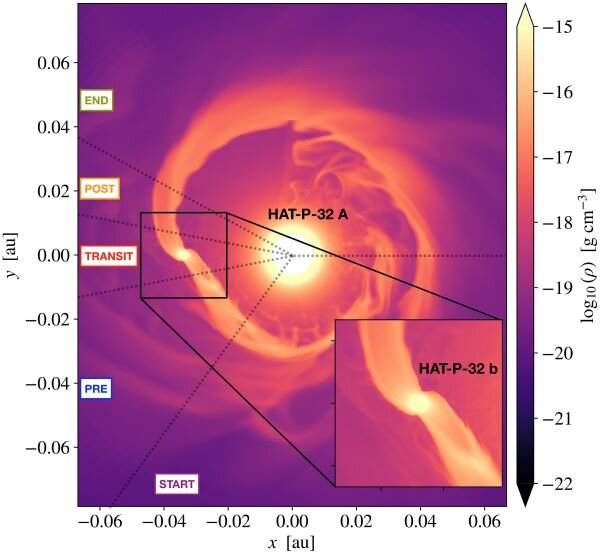American astronomers have announced the discovery of a giant helium “tail” of the gas giant HAT-P-32b. Its length is more than 50 times the radius of the exoplanet.

HAT-P-32b orbits a star located at a distance of 950 light-years from Earth in the direction of the constellation Andromeda. The exoplanet is a so-called hot Jupiter. Its mass is 68% of the mass of Jupiter with almost twice the radius. The orbit of HAT-P-32b passes at a distance of only 0.033 AU (5 million km) from the star, which is why its atmosphere is heated to a temperature exceeding 1000 °C.
A team of American researchers conducted a series of observations of HAT-P-32b transits. For this, they used the 9.2-meter Hobby-Eberly Telescope installed on the territory of the McDonald Observatory.
Observations have shown that HAT-P-32b has a giant “tail” consisting of helium. It stretches behind the planet, and its length is 50 times its radius. According to scientists, the “tail” was formed due to the proximity of HAT-P-32b to its star. Under the influence of its powerful radiation, the atmosphere of the gas giant expanded very much. This leads to the fact that some of the matter escapes from the gravitational embrace of HAT-P-32b and enters orbit around the star.
It is worth noting that this phenomenon is not something unique. Previously, scientists already found “tails” in exoplanets that were formed both as a result of similar processes and other mechanisms (for example, due to collisions). However, none of them can be compared in scale with the size of the gas flow in HAT-P-32b.
Recall that we recently talked about how the Chandra telescope photographed a giant gas tail stretching 1.5 million light-years behind a group of galaxies.
According to https://phys.org
Follow us on Twitter to get the most interesting space news in time
https://twitter.com/ust_magazine
